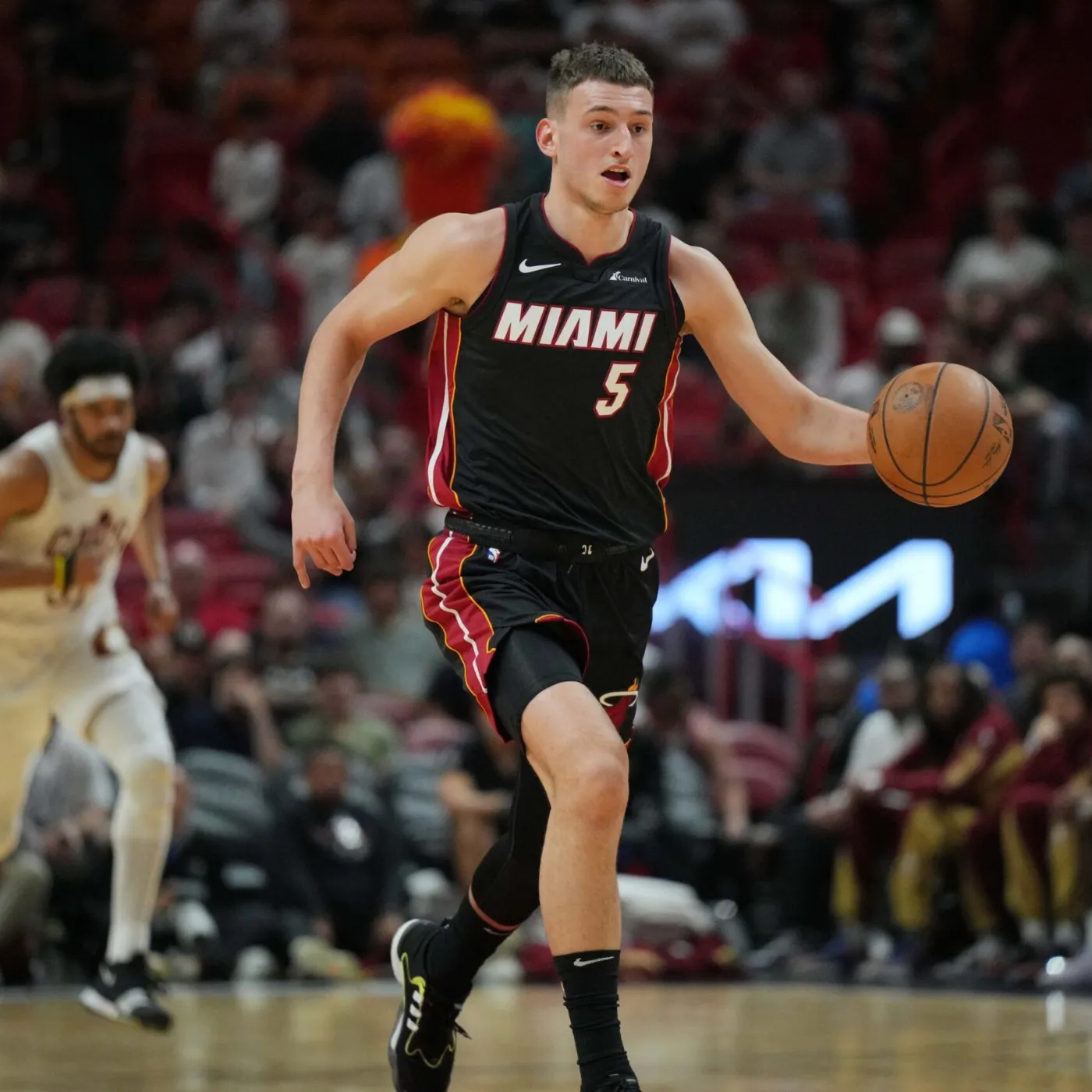
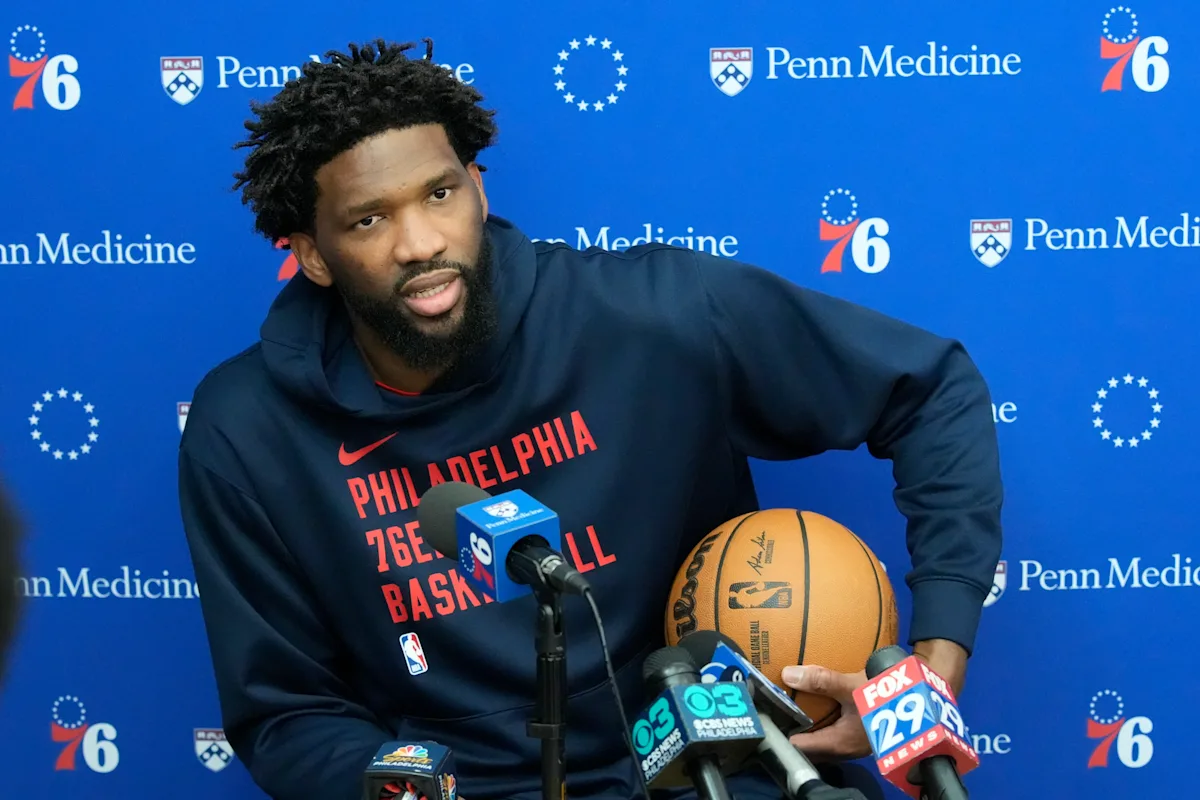
From MVP to Calm in Front of the Cameras – Joel Embiid Has Mastered Turning the Media Into His Secret Weapon!
Joel Embiid, the towering Philadelphia 76ers superstar, has long been known for his dominance on the court. But beyond his rebounding, scoring, and shot-blocking, there’s another arena where Embiid has undergone a remarkable transformation: his relationship with the media. Once infamous for confrontational interviews and fiery comments, Embiid has evolved into a media-savvy superstar, carefully shaping his narrative while maintaining the charisma that fans adore.
The Early Days: Fire and Confrontation
In the early stages of his NBA career, Joel Embiid’s interactions with journalists were often unpredictable. Known for his bluntness and occasionally provocative remarks, Embiid did not shy away from speaking his mind, even if it meant courting controversy. Fans and reporters alike remember moments when his words sparked heated debates across social media.
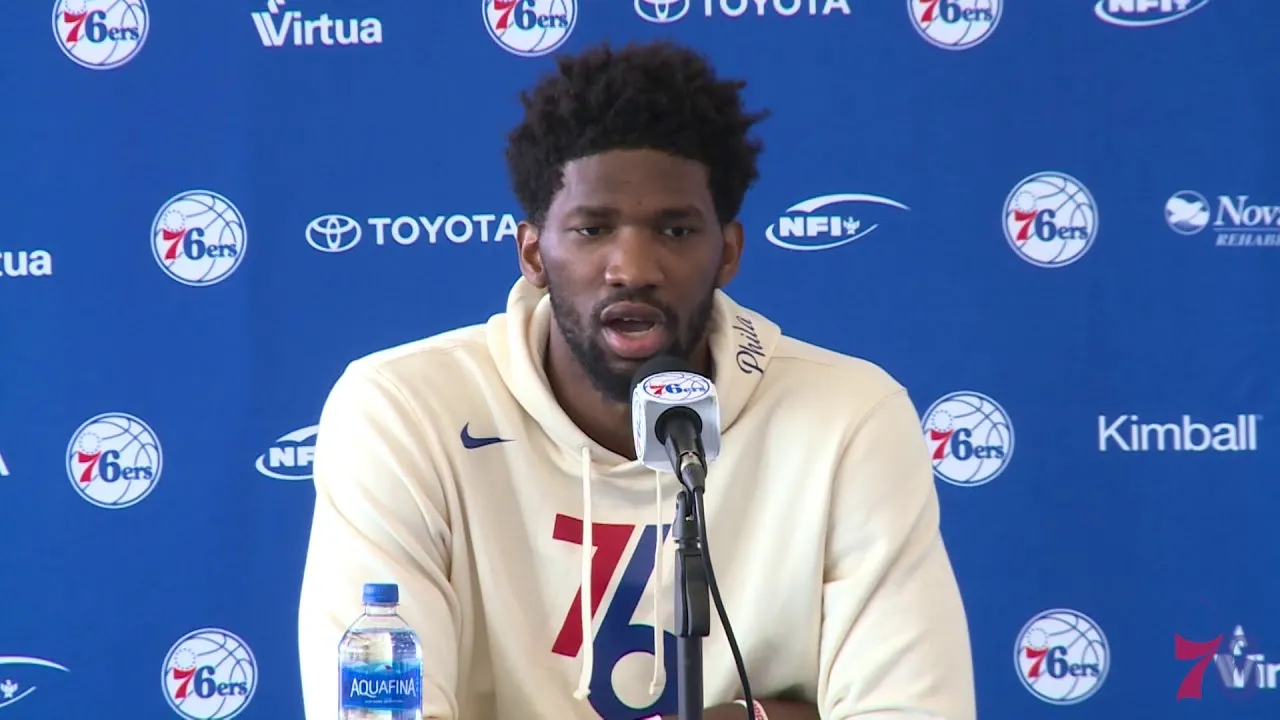
One of the most notorious incidents involved his on-court clash with Hassan Whiteside. The confrontation went beyond normal player trash talk—Embiid’s comments to reporters after the game displayed his fiery persona, mixing confidence with controversy. Similarly, his early MVP campaigns were accompanied by bold statements, sometimes interpreted as taunting rivals or questioning referees’ decisions. Headlines often read like: “Embiid Challenges the League, Questions Authority”—a clear sign that his relationship with the media was raw and unfiltered.
During these years, Embiid’s public image was a complex mix of genius talent and unpredictability. Journalists weren’t always sure whether his remarks were sincere or part of a calculated psychological game. Either way, it drew attention, generated viral moments, and fueled discussion—both positive and negative—around the Philadelphia 76ers franchise.
Turning Point: Maturity On and Off the Court
The turning point in Embiid’s approach to media didn’t happen overnight. With more experience and the pressure of being the face of the franchise, he began to recognize the power of narrative. Winning MVP was more than a personal achievement—it was an opportunity to redefine his public persona.
Embiid’s current style demonstrates strategic communication. Instead of impulsive remarks, he now uses interviews to highlight his achievements, subtly address critics, and even inject humor to disarm tense situations. He’s learned that controlling his words can help reduce scrutiny, manage expectations, and steer public perception without compromising his authenticity.
Take, for example, his post-game interviews this season. Embiid now answers questions with a mix of wit and diplomacy, balancing honesty with restraint. Even when asked about past controversies or rivalries, he navigates the conversation smoothly, signaling growth and media intelligence.
Iconic Media Moments: Then vs. Now
Comparing Embiid’s past and present media moments reveals a stark evolution:
-
Then: Bold claims about MVP races often came across as provocative challenges, fueling debates about his ego and temperament.
-
Now: Similar topics are addressed with careful phrasing, demonstrating both confidence and emotional intelligence.
One memorable incident in his earlier career involved a heated exchange with a reporter over his playing time and performance. At the time, Embiid’s comments were interpreted as aggressive and defensive, sparking viral headlines and endless social media discussion. Contrast this with a recent interview following his MVP win, where he addressed criticism of his team’s strategy calmly, turning what could have been a controversial moment into a media victory that strengthened his brand.
Even during playful interactions on social media, Embiid now exhibits a calculated charm. Tweets that once might have been raw venting are now crafted to entertain, engage fans, and maintain a positive public image. This evolution demonstrates an understanding of how the modern sports media ecosystem works, where social media, press conferences, and highlight reels all feed into the player’s narrative.
The Role of MVP Status in Media Mastery
Winning the MVP award marked a new era in Embiid’s career. With recognition as the league’s best, the stakes of media appearances skyrocketed. Every comment, every gesture, was analyzed by fans and pundits alike. Embiid rose to the challenge by turning interviews into strategic tools.
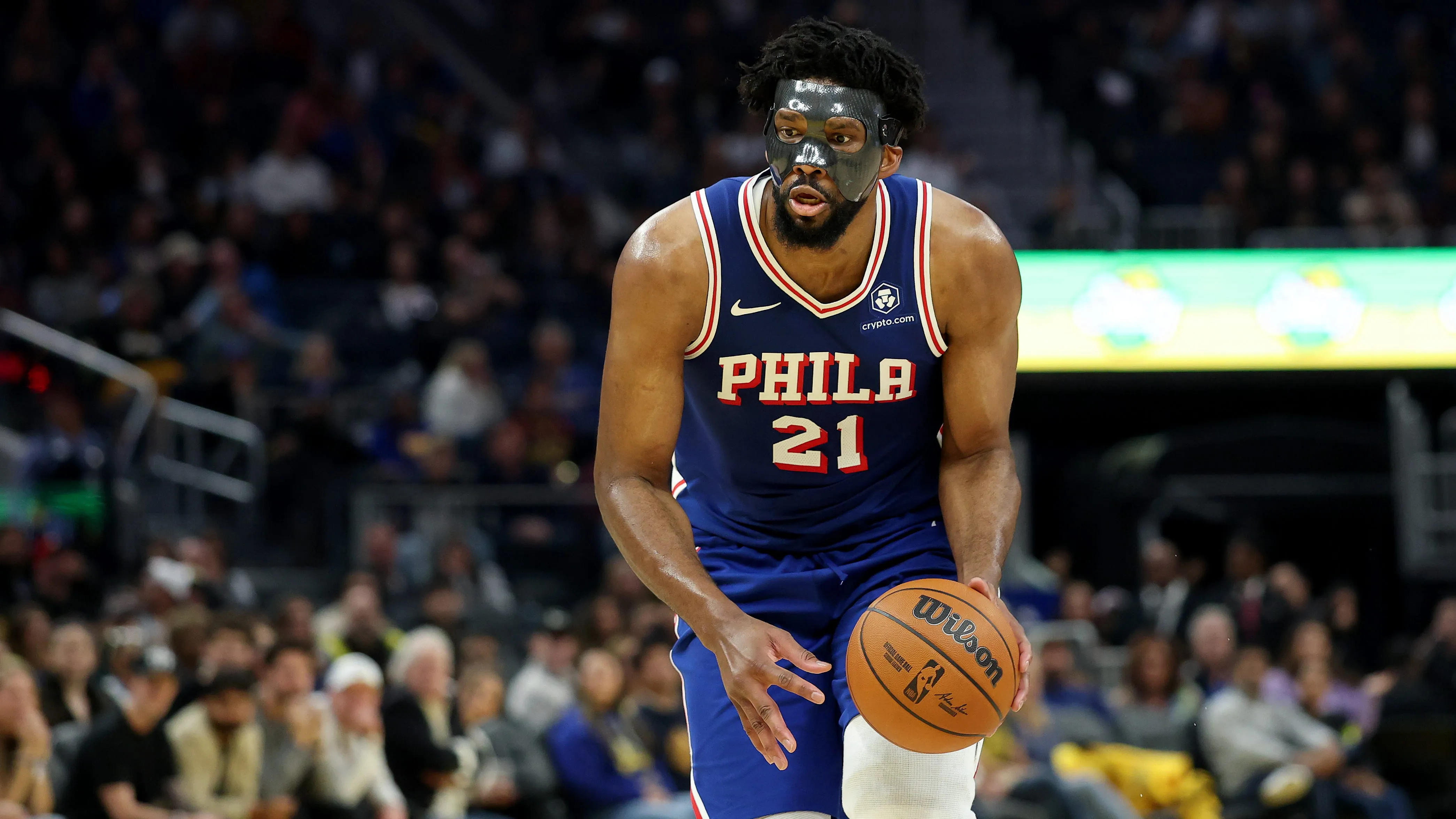
Today, he uses media to underscore his leadership, promote team chemistry, and support community initiatives, all while staying approachable. Where once he might have sparked controversy with a casual remark, now he crafts stories that inspire, entertain, and sometimes even amuse fans worldwide.
This media mastery doesn’t detract from his on-court ferocity; rather, it complements it. Opponents still feel his physical dominance in the paint, but fans and reporters increasingly notice a player who commands respect with words as well as actions.
Lessons in Growth: Beyond Basketball Skills
Joel Embiid’s journey is a lesson in holistic growth. His evolution shows that maturity in professional sports extends beyond physical skills—emotional intelligence, communication, and public image management are just as crucial. By learning to navigate the media landscape, Embiid has:
-
Reduced public controversies that once overshadowed his talent.
-
Enhanced his personal brand, appealing to sponsors, fans, and the league.
-
Set a standard for other NBA stars on balancing honesty with diplomacy.
-
Demonstrated leadership, not just in scoring, but in narrative control.
This transformation illustrates that true greatness in sports is multidimensional. Dominance on the court is complemented by strategic presence off it, and Embiid’s journey offers a blueprint for rising stars aiming to leave a lasting legacy.
The Social Media Factor
In today’s NBA, social media amplifies every word. Embiid recognized that impulsive remarks could spiral into headlines, memes, and debates in minutes. His careful calibration of posts, tweets, and interviews shows media literacy, allowing him to engage fans without creating unnecessary controversy.
Whether it’s playful banter with fellow players or witty responses to fan questions, Embiid now controls the narrative. He’s no longer reacting; he’s directing attention, reinforcing his image as both a dominant athlete and intelligent communicator.
Why This Matters for Fans and the NBA
For fans, Embiid’s evolution is a reminder that athletes are human, capable of growth beyond physical ability. It’s exciting to witness a player who not only wins games but also shapes how the story is told.
For the NBA, Embiid’s media mastery elevates the league’s profile. Every well-crafted interview or viral social media post contributes to the global narrative of the NBA as a league of talented, media-aware superstars. By handling media skillfully, Embiid enhances both personal and league reputation, setting a new standard for professionalism.
Looking Ahead: What the Future Holds
Joel Embiid’s trajectory suggests that the next phase of his career may involve even greater control over his public image. As he continues to dominate on the court, his media strategy will likely evolve, possibly influencing contract negotiations, sponsorships, and even legacy discussions.
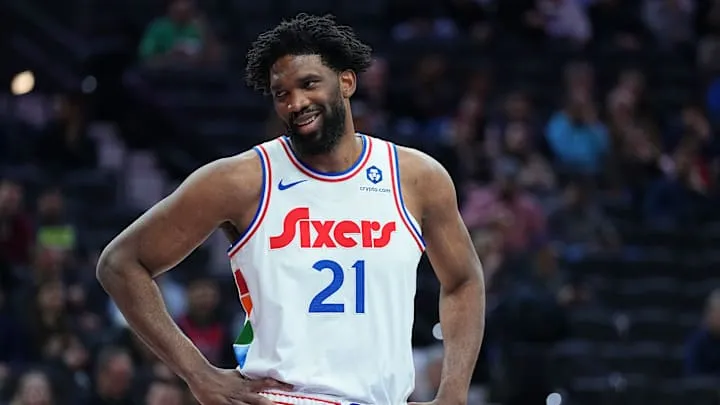
Fans can expect more of Embiid’s signature blend of humor, insight, and subtle provocation—but with the strategic polish of a true media master. His story highlights a critical lesson for aspiring athletes: mastering communication off the court can be as impactful as mastering skills on it.
Conclusion: From “Killer Instinct” to “Media Genius”
Joel Embiid’s transformation is remarkable. From a young, fiery player prone to confrontational remarks to a mature, media-savvy MVP, he exemplifies how emotional intelligence and strategic communication can shape a legacy. His evolution isn’t just about basketball—it’s about navigating the spotlight, managing public perception, and growing as a leader and influencer.
For fans, journalists, and fellow players, Embiid’s journey offers a blueprint: the path from aggressor to master communicator is challenging, but the rewards—respect, influence, and lasting impact—are well worth it.








